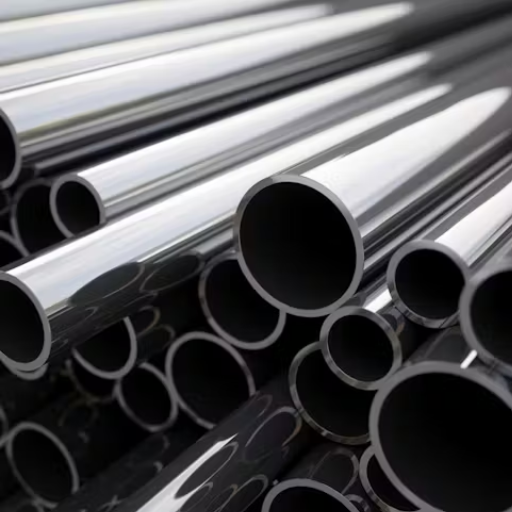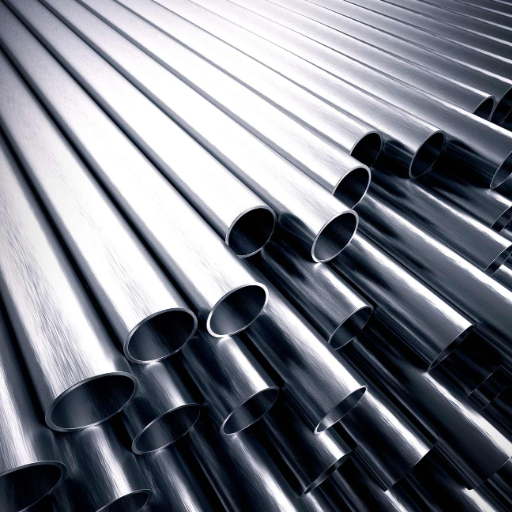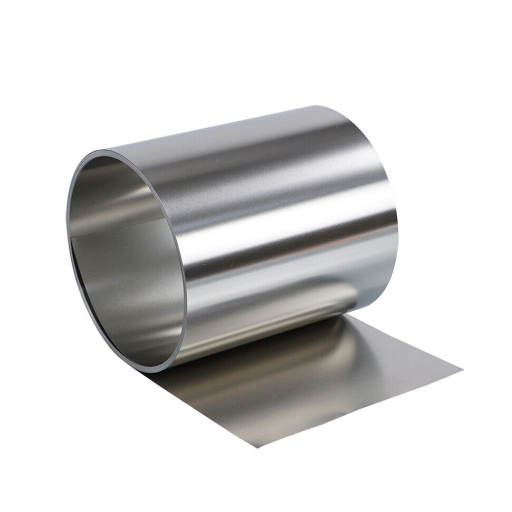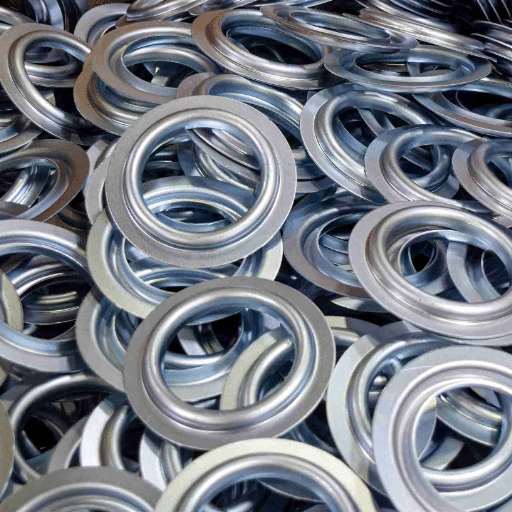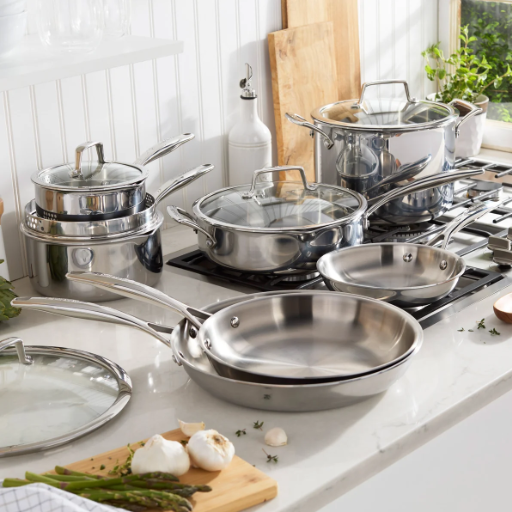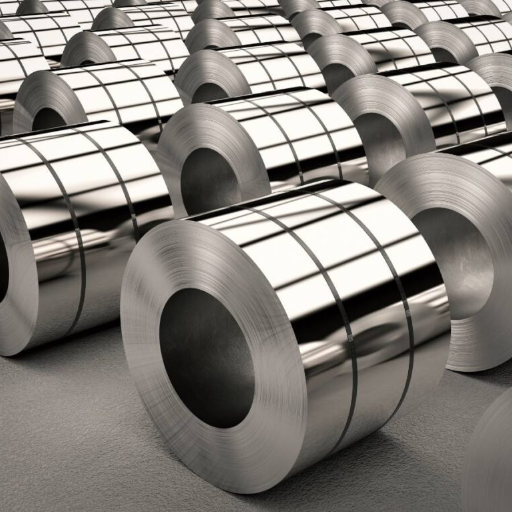Strainers, microwavable dishes, and other intendable food storage containers are best created using materials like 304 stainless steel due to its durability and resistance to corrosion. These qualities give 304 steel an upper-hand, but wondering if they can be used in microwaves still lingers in the minds of many. This quintessential guide scrutinizes the nuanced safety standards of microwaving stainless steel alongside effective Stainless Steel food container usage. From research, 304 stainless steel has properties making it seem microwave friendly. As a last-ditch effort to confirm its usability, additional alternatives to traditional microwaving devices will be offered. In the end, this guide will place you one step closer to deciding whether these containers fit your kitchen best.
What Happens When You Put Stainless Steel in a Microwave?

The exposure of stainless steel to microwaves normally depends on the thickness, shape, and finish of the piece being used. Its surface is more smooth than porous. Rather than absorbing microwave radiation like food does, stainless steel reflects it. This prevents effective heating of the food inside the microwave. Furthermore, sharp edges or irregular surfaces can initiate arcing- the sparks that are produced due to electrical discharge. While many modern microwaves are equipped with safety features intended to protect against minor reflections, frequent use of stainless steel containers can cause damage to the appliance or produce uneven heating in the device. The best suggestion would be to avoid the use of stainless steel in the microwave if safety and even optimal cooking result is desired.
Understanding How Stainless Steel and Microwave Ovens Interact
The conductive traits of stainless steel hinder microwave penetration, which disrupts the cooking process because food heat is absorbed through microwaves. As mentioned earlier, stainless steel may create electric build-up causing sparking and arcing in other places as well. Although some stainless steel items such as microwave safe plastic utensils tend to have coatings designed to counter these issues, most stainless steel containers are unfit for microwaves. Such misuse poses a danger to the appliance and the user. Thus, to avoid safety hazards and damage to the appliance, microwaves should be used with glass or ceramic vessels suitable for microwaves. These materials are far safer.
Can Stainless Steel Cause Spark or Arc in the Microwave?
Yes, microwaves can spark if you use stainless steel in them. This happens because a microwave’s stainless steel cavity reflects instead of absorbs microwaves; this will cause arcing or sparks if any metal contact with the microwave’s sharp edges. Damage to your microwave and setting a fire are some of the risks you run into if you use stainless steel in a microwave. Although some stainless steel specially made for stainless containers are microwave-safe, in the absence of the clear indication ‘microwave-safe’ it is deemed unwise to use stainless steel in the microwave.
Is 304 Stainless Steel Different from Other Types in the Microwave?
There are several types of stainless steel, including 304. When it comes to their differences in the context of microwaving them, they are trivial. Just like the rest of stainless steels, 304 reflects microwaves because of its conductive nature, thus causing sparking or damage to the appliance. With regards to the microwavable safety aspect, the constituent elements of 304 (iron, chromium, and nickel) do not make it any more favorable than the other grades. This leads us to the conclusion that unless marked as microwavable, 304 stainless steel should be avoided in microwaves.
Is 304 Stainless Steel Actually Microwave Safe?

The 304-grade stainless steel is not microwaveable safe. It is common to other types of stainless steel having conductive properties that microwave energy to be reflected. This causes sparking, damaging the appliance, and fire hazards. It is safe to assume and remember until marked safe for use in microwave, it should not be used, and definitely not products made from 304 stainless steel.Hide aguardando explicaciones.Navigation 1.0.1. Stainless steel relevant 304. Guaranteed safety is only possible when these materials are specifically meant for microwave devices.
What the British Stainless Steel Association Says About Microwave Safety
The British Stainless Steel Association (BSSA) advocates that, for ovens, stainless steel including 304 grade should only be considered if the manufacturer’s statement permits such usage because of the high reflection properties of stainless steel which can create problems with the microwave and spark, highly damaging the appliance, and posing a safety risk. The BSSA highly recommends following the instructions outlined on the product documents and suggests using only safe and tested materials within the microwave. Beware of manufacturer claims and strong signs when verifying for safety, for best precaution do check related documents for any contradictions issued by the manufacturer aligned with provided labeling suggestions.
Why Manufacturers Often Label Stainless Steel as Not Microwave-Safe
The clasps of microwave stoves are not intended to withstand stainless steel, so for stainless steel aluminum is often marked as non-microwaveable, but it is most certainly a matter of safety as it relates to electromagnetic radiation. Reflective rather than absorptive tendencies of stainless steel enable it to remain warm but not hot, unequivocally quenched, thus precluding the efficient heating of food within the appliance. The resultant reflection also has the potential for igniting materials resulting in fires or damaging the components within the microwave. In addition, stainless steel goods may also interfere with the even distribution of microwaves resulting in non-uniform heating. Because of all these reasons, to protect the consumer as well as the appliance manufacturers have deemed it fit to add the warning.
What Are the Alternatives to Stainless Steel for Microwave Reheating?

While reheating food in a microwave, it is important to not use stainless steel. Recommended materials are glass and ceramics as these do not react with food and ensure even heating. Platable glass and ceramic dishes are preferable since they do not leach harmful chemicals unlike non-reactive microwavable plastics. Silicones can also serve as outer containers as these materials are flexible and heat resistant. A microwaveable label must always be checked for any outlined material for safety and effectiveness purposes.
Microwave-Safe Materials for Food Storage and Reheating
To guarantee effective microwaves for sterility and reheating use materials microwave safe, please examine the mentioned considerations:
- Glass: Borosilicate and tempered glass containers are some of the most effective for use in microwaves because of their strength and reactive properties. Borosilicate glass is sturdy and will not retain food stains or absorb food odors, while tempered glass is free from any marks which could increase the chance of shattering in the future.
- Ceramics: Select ceramics explicitly stated as safe to use in microwaves. Poorly glazed ceramics with no coating may fracture and emit food to heating substances.
- Plastics: Only microwave safe plastics can be relied on. These need BPA and phthalates as these soften with heat and provide toxic substances. Polypropylene is an ideal microwave plastic which withstands harsh heating conditions.
- Silicone: For applications such as reheating, a food-grade silicone is suitable since it is flexible, heat-resistant, and can withstand high temperatures without degrading.
- Avoid materials with metals: Glass items containing some metals or decorations like foil and metalized plastic should not come anywhere near microwaves as they can spark and cause serious damage to the appliance.
Users move with ease through a range of materials that can be used to store and reheat food by following these simple but necessary guidelines. Always check the manufacturer’s specifications to ensure no damage is done as well as looking out for the microwave-safe symbol.
Finding Eco-Friendly and Reusable Microwave-Safe Containers
When looking for eco-friendly and reusable microwave-safe containers, focus on materials that are sustainable and sturdy. Consider glass containers; most are free from BPA and highly resistant to retaining stains and odors. Look for tempered glass varieties, which are usually marked microwave-safe and can withstand thermal stress.
For lightweight options, silicone containers are growing in popularity. They are flexible and long lasting. Food-grade silicone is safe for microwaving and has many practical uses. Be sure the silicone container asserts its microwave compatibility.
Also, choose high-grade plastics designed for repeated use. These should be BPA-free and clearly labeled as microwave-safe. Durable debris shields intended for the lids of the containers should be able to effectively seal in steam without warping over time.
Choose brands that enhance strategic sustainable approaches by reducing single-use plastics along with their recyclable or biodegradable packaging. Striving for unattached purposes leads to multifunctional eco-minded solutions for food storage and reheating.
How to Safely Use Stainless Steel Container for Meal Prepping?
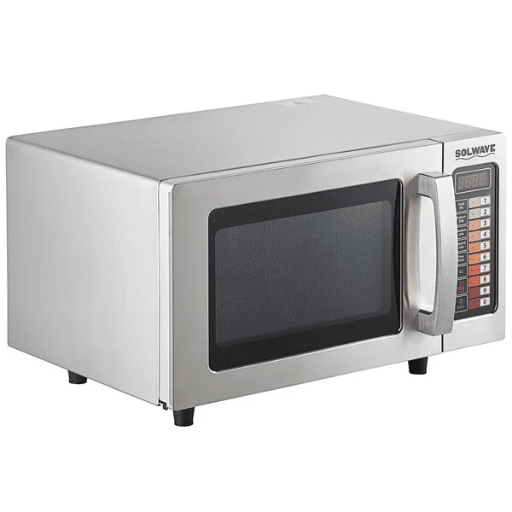
Having your containers crafted out of stainless steel ensures that they are food-grade without toxic coverings or additives. Do not use microwaves with them, as stainless steel is not microwave safe and will damage or produce sparks. Rather, refrigerate or freeze them, and if oven safe, they may be reheated in the oven (conventional), stovetops, or conventional ovens. Containers must be cleaned and dried thoroughly before any corrosion or rust develops. Select containers with seals to guard against intrusion of air to protect food freshness and avoid spoilage. Because of stainless steel and its non-porous surface, it is a hygienic and durable material ideal for long-term meal storage.
Transferring Food from Stainless Steel Lunch Boxes for Reheating
When taking food out from the stainless steel lunch boxes for reheating , it is important to apply safety and quality standards in all the steps. Start by taking the contents of the microwave steel lunch box to a microwave safe container so as to avoid damaging the microwave, and ensure heating is even. Avoid taking the food with dirty utensils so as not to cross contaminate. For oven reheating , the food should be put in an oven safe, and the oven set on the appropriate temperature for the dish. If reheating on the stovetop , use the appropriate pan or pot to ensure that the food texture and taste are preserved. Following the above ensures that the meals that have been reheated are safe to eat and that their original taste and nutrition are preserved. Always observe the required levels of temperature during the reheating session to avoid encouraging bacteria growth.
Leakproof Stainless Steel Containers for Food Storage
Stainless steel containers are incredibly durable, leakproof, and safe, which makes them superb for food storage. Unlike plastic ones, steel containers do not react with the contents which means that they would not give out harmful materials even when food stored in stainless steel containers is acidic or hot. Most of them have either rubber or silicone mold that seal the containers to make them airtight and leakproof which helps keep food secure and fresh, avoiding spills. These containers can be cleaned easily, making them ideal for home or travel and are also lightweight and rust-free. They also help in battling the war against climate change since the stainless steel containers aid in protecting the environment; reusable and recyclable, they combat single-use plastic. You can store virtually anything in these containers, be it liquids such as soup or dry food, and they’ll keep it safe for a long period.
Are There Any Microwavable Stainless Steel Options on the Market?

At present, the use of stainless steel in microwaves is not considered safe due to its reflective surface which may cause sparking and damage the appliance. In addition, microwaves use the absorption of microwave radiation to heat food, and stainless steel blocks this process. While there are no authentic microwavable stainless steel containers, some designers do offer hybrids that incorporate silicone in place of some components of the sturdier stainless steel. It must, however, be emphasized that these hybrids are not true microwavable contraptions, and have to be used with caution and according to the manufacturer’s instructions.
New Developments in Microwave-Safe Stainless Steel Food Containers
Developments in the recent past in materials science and engineering has worked towards improving the microwave compatibility of stainless steel. While stnainless steel is commercially microwave friendly because of its reflective nature, other researchers and manufacturers are working on thin layer coatings and composites that helps reduce these problems. For example, some of the experimental designs have started to apply heat resistant polymers or nonmetallic coatings on stainless steel to help reduce reflectivity, but they are not mainstream as of yet. Also, some of these containers are being sold with claims that they are partially microwave safe because their exteriors are made of stainless steel and the insides are made of microwave grade materials like borosilicate glass or BPA plastics. These materials still need to be handled carefully since misuse can lead to appliance damage or uneven heating. Any specific claims related to the product’s safety concerning said industry standards should always be verified through meticulous testing, which is often lacking. Although these developments are promising, the reality is that any truly universal microwave compatible stainless steel hybrid remains an unproven concept.
How to Identify Genuine Microwave-Safe Stainless Steel Products
Stainless steel products require stringent checking for marks as their label and documentation are very critical when determining whether they are microwave-safe. Stainless steel product manufacturers should have marks that attest the microwave compatibility of their products on the packaging and engraving. A manufacturer stating their products are microwave safe needs to have their proprietary testing data for the appliance, in accordance with the IEC 60335-2-25 standards set for microwaves. Additionally, check guides for user manuals and credible third-party reviews to assess if these endorsements are validated. Inspection for damages such as scratches, because their presence increase the risk of arcing and sparking within a microwave, is essential regardless. Blander counterparts, branded or not, are stainless steel products with generic safety features that are presumed safe due to lacking comprehensive quality control.
What Precautions Should You Take with Stainless Steel and Microwaves?

Stainless steel requires great care when used in combination with a microwave oven in order to prevent damage and ensure safety. Glass or plastic utensils that have smooth edges should be used, as the presence of more any rough surfaces or corners tend to concentrate electromagnetic energy which may lead to sparking. Regular stainless steel that completely encloses food should not be placed in the microwave as it might obstruct microwave penetration leading to insufficient heating, posing potential harm to the appliance. Manufacturer instructions recommended for the appliance and the stainless steel product must be followed. Should a new item be attempted, close supervision is recommended along with the use of minimal power to mitigate potential risk. Cutting safety includes not operating the microwave while empty or with incorrectly positioned metal as this is a sure way to inflict severe internal damage to the appliance.
How to Test if Your Stainless Steel Container is Truly Microwave-Safe
Use these steps to determine if your stainless steel container would be safe for microwave use. Initially, inspect the container’s manufacturer label and documents to see whether it is marked ‘microwave safe’ — if you do not see this, do not use the container in question. In case precautionary steps need to be taken, Conduct a test with no risk. Put the container in the microwave with water in a cup. Keep the container empty so as not to touch the microwave’s walls. Set power to low and heat the container for thirty seconds while observing it for signs of sparking or arcing. If cherished sparks occur, turn off the microwave and take out the object. Keep in mind that even containers that pass this test may not be touted for prolonged use due to their lack of heat distribution or damage to the appliance. Foster safety at all costs and follow equipment protocols.
References
Frequently Asked Questions (FAQ)
Q: Are 304 stainless steel food containers microwave-safe?
A: No, 304 stainless steel food containers are not microwave-safe as microwaves cannot penetrate metal. This means they should not be used in microwave ovens due to electrical safety concerns.
Q: What are some alternatives to 304 stainless steel for microwaving food?
A: If you’re looking for materials that can be used in a microwave oven, consider containers made of glass or microwave-safe plastic. These materials are safe for microwaving food and are easy to clean.
Q: Can I use a 304 stainless steel lunch container for heating food?
A: While 304 stainless steel lunch containers are great for keeping food fresh and leak-proof, they cannot be used in the microwave. Instead, transfer food to a microwave-safe container before heating.
Q: Why can’t 304 stainless steel containers be used in microwave ovens?
A: 304 stainless steel containers cannot be used in microwave ovens due to electrical safety issues. Metal can cause sparks and damage the microwave.
Q: Are there any 304 stainless steel food containers that are easy to clean?
A: Yes, containers made of 304 stainless steel are generally easy to clean. They are resistant to staining and do not retain odors, making them a popular choice for food storage.
Q: Is it safe to freeze food in 304 stainless steel containers?
A: Yes, 304 stainless steel containers are freezer-safe. They can effectively keep your food fresh in the freezer without the risk of breakage that comes with glass or ceramic containers.
Q: What types of food can I store in 304 stainless steel containers?
A: You can store a wide variety of food in 304 stainless steel containers, including fruits, vegetables, grains, and proteins. However, remember that they should not be used in the microwave.
Q: Are there any recent posts discussing the use of stainless steel containers in microwaves?
A: Yes, there are recent posts available that discuss the safety and practicality of using stainless steel containers. However, keep in mind that 304 stainless steel is not suitable for microwave use.

